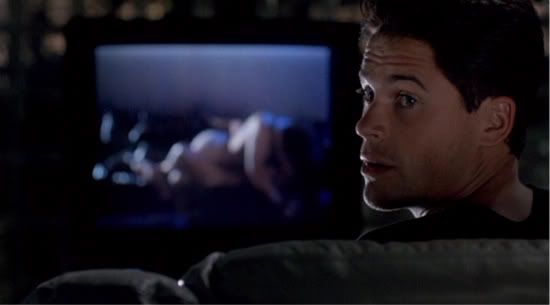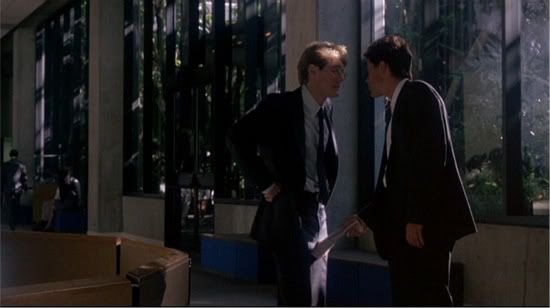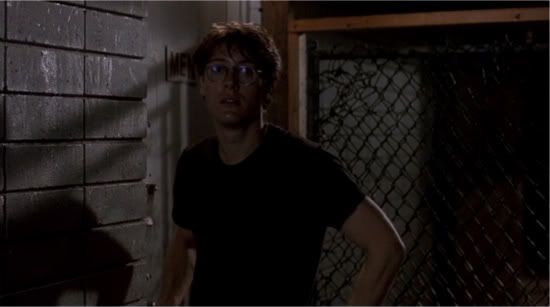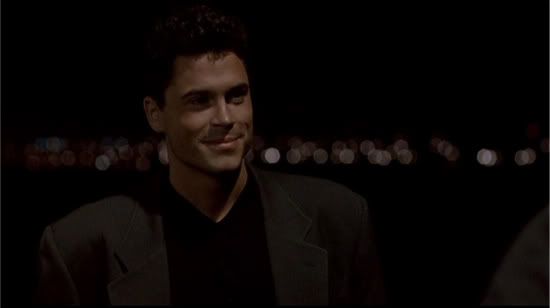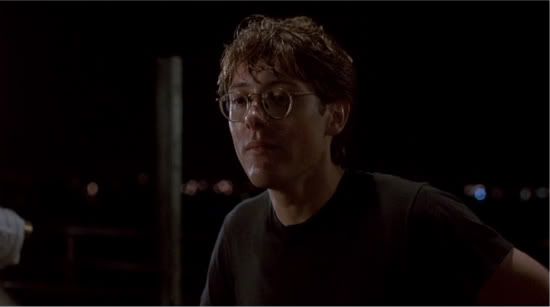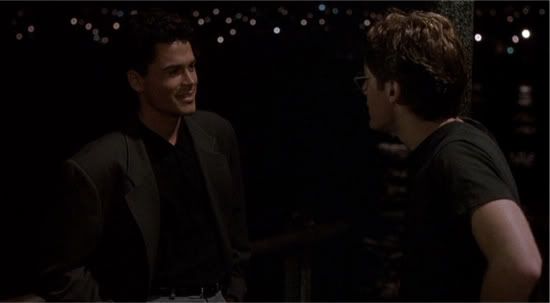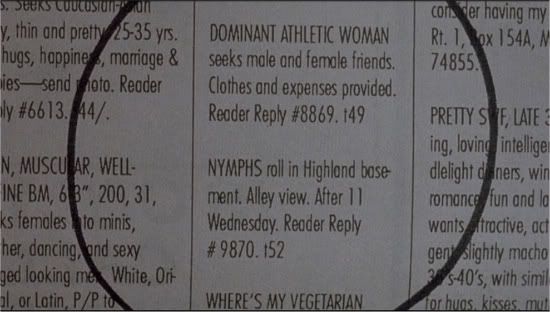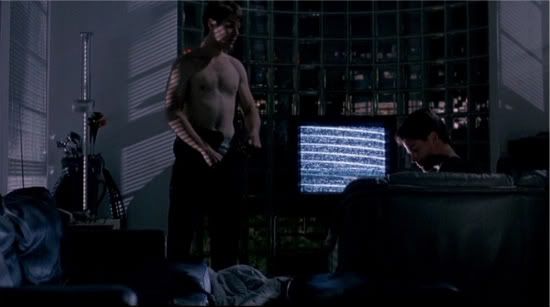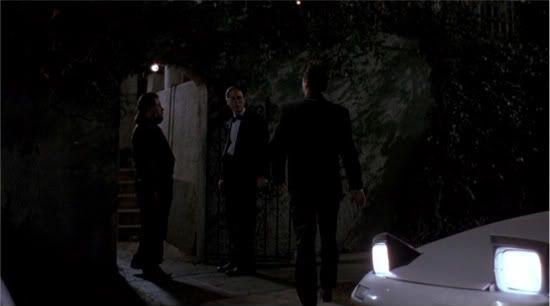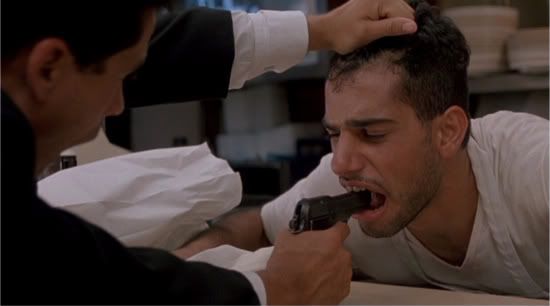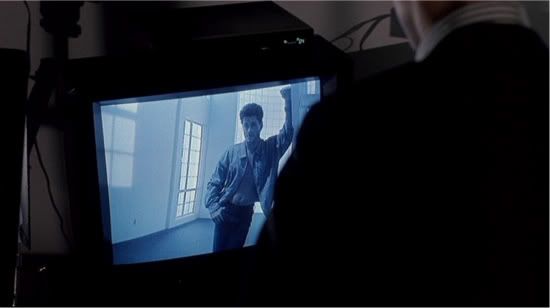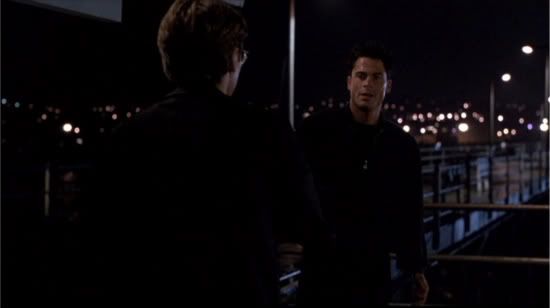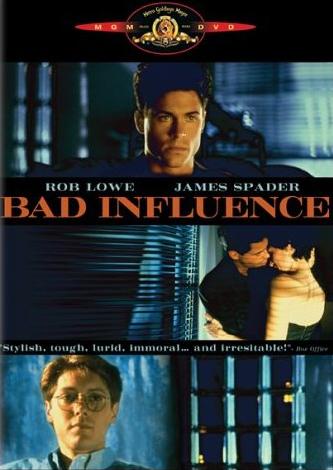IV1: Have you written your post about Bad Influence yet?
IV2: No. I'm really late. You?
IV1: No. I've been playing with words, but they don't really come together. They don't make an essay or a post or whatever.
IV2: Maybe we should talk it over. If it can't be an essay, maybe it can be a conversation. Anyway, writing is just talking to yourself, trying to convince yourself of something. Anyone who reads a blog post is just overhearing someone else's mumbling. And a dialogue is usually more interesting than a monologue.
IV1: Ok. Well, let's start with the truth. I’ve never liked any of Curtis Hanson’s movies. But I like this one. It’s one of those works that alter your perceptions of other works by the same author. Like how Carlito’s Way makes Scarface a better movie and Scarface makes Carlito’s Way a worse one. So Bad Influence makes L.A. Confidential seem better, but the memory of L.A. Confidential also taints my experience of Bad Influence.
And I like the shot that “introduces” Spader’s character. I don’t mean during the credits, where we see him and Rob Lowe doing something mysterious. The credits sequence is like a glimpse of a stranger at a party. You don’t quite understand who they are, and there’s a lot of other stuff going on. But then, very suddenly, you’re introduced. And here it happens when he opens his mouth. His voice is a little weak. He asks a question.
IV2: Well, you remember Heartbeat Detector, right? I think one thing I admired about it was its devotion to a corporate image. I mean that every room looks like an advertisement for that room, the way people wear their clothes or drive their cars looks like a commercial for those items. It’s like the characters of the film are trying to project this idea that these items are worth it. Like, nowadays, the way people wear Bluetooth headsets—they have this strange relationship with them where they try to look like the people on the Bluetooth headset box. Or the way iPod owners insist on using the white earbuds instead of getting better headphones. And, starting with the moment Spader opens his mouth, we enter this world where the mise en scene is modeled on advertising, on stock photography. Everyone’s desks are arranged like old computer ads, very orderly. Early on, when Spader’s feeling down, he goes to the bar where he first meets Lowe, and even that is lit like a beer commercial.
IV1: Well, the aesthetic ideas behind Hanson’s images are ultimately indebted to advertising of one kind or another. It weakens a lot of his other films, but it strengthens this one. More print advertising—magazine ads, motivational posters, travel brochures—than anything else. Settings like the zoo, the clean wharf with its fishermen, for instance, look like they could belong in a travel magazine. When the bands are playing--and there are two "rock club" scenes--there are shots that look just like glossy music videos. And what was 8 Mile if not an advertisement for Eminem, an advertisement for the kind of glossy grittiness you also see in his music videos and concerts?
IV2: Yes, and the sex scenes have this Cinemax quality to them, which works for them rather than against them. As though images of the world have invaded the world itself. Advertising has supplanted experience. Spader's character lives his life very carefully, like he's the guest at some hotel. A guest at his own anniversary party. It’s a world that is enveloping and is unfulfillingly comforting. It can replace everything without actually being anything. And this is true of both Spader and Lowe's worlds. Neither one has more depth. Each one has invested too much into his own ideas to let go. Lowe needs his power and Spader needs his comfort, and both notions are equally marketable and empty.




